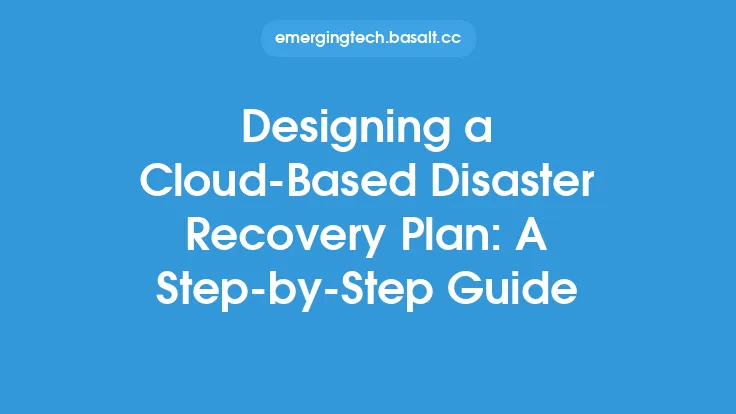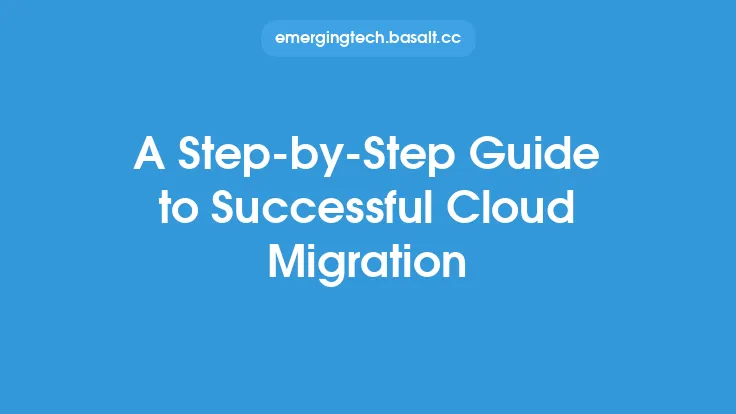As more businesses move their applications to the cloud, the importance of securing these applications has never been more critical. Cloud-based applications offer numerous benefits, including scalability, flexibility, and cost savings, but they also introduce new security risks that must be addressed. In this article, we will delve into the world of cloud security, exploring the various measures that can be taken to secure cloud-based applications and protect sensitive data.
Introduction to Cloud Security
Cloud security refers to the practices, technologies, and controls designed to protect cloud computing environments, including applications, data, and infrastructure, from unauthorized access, use, disclosure, disruption, modification, or destruction. Cloud security is a shared responsibility between the cloud provider and the customer, with each party having its own set of responsibilities. The cloud provider is responsible for securing the underlying infrastructure, while the customer is responsible for securing their applications and data.
Cloud Security Risks and Threats
Cloud-based applications are vulnerable to various security risks and threats, including data breaches, unauthorized access, malware, and denial-of-service (DoS) attacks. Data breaches can occur when sensitive data is not properly encrypted or when access controls are not in place. Unauthorized access can happen when passwords are weak or when access controls are not properly configured. Malware can be introduced into cloud-based applications through phishing attacks or other means, while DoS attacks can overwhelm cloud-based applications, making them unavailable to users.
Securing Cloud-Based Applications
To secure cloud-based applications, several measures can be taken. First, it is essential to implement robust access controls, including multi-factor authentication, to prevent unauthorized access. Second, data encryption should be used to protect sensitive data both in transit and at rest. Third, cloud-based applications should be regularly updated and patched to prevent vulnerabilities from being exploited. Fourth, network security measures, such as firewalls and intrusion detection systems, should be implemented to prevent unauthorized access to cloud-based applications. Finally, cloud-based applications should be monitored regularly for security threats and vulnerabilities.
Cloud Security Technologies
Several cloud security technologies are available to help secure cloud-based applications. These include cloud access security brokers (CASBs), cloud security gateways, and cloud workload protection platforms (CWPPs). CASBs act as intermediaries between users and cloud-based applications, providing an additional layer of security and control. Cloud security gateways provide network security controls, such as firewalls and intrusion detection systems, to protect cloud-based applications. CWPPs provide workload protection, including vulnerability assessment and compliance monitoring, to ensure that cloud-based applications are secure and compliant.
Best Practices for Cloud Security
To ensure the security of cloud-based applications, several best practices should be followed. First, a cloud security strategy should be developed, outlining the security controls and measures that will be implemented to protect cloud-based applications. Second, cloud-based applications should be designed with security in mind, using secure coding practices and secure architecture. Third, cloud-based applications should be regularly monitored for security threats and vulnerabilities, with incident response plans in place in case of a security incident. Fourth, cloud security training should be provided to users, to educate them on cloud security best practices and the importance of security. Finally, cloud security should be continuously reviewed and updated, to ensure that cloud-based applications remain secure and compliant.
Cloud Security Frameworks and Standards
Several cloud security frameworks and standards are available to help guide cloud security efforts. These include the National Institute of Standards and Technology (NIST) Cybersecurity Framework, the Cloud Security Alliance (CSA) Cloud Controls Matrix, and the International Organization for Standardization (ISO) 27017 standard. The NIST Cybersecurity Framework provides a comprehensive framework for managing cybersecurity risk, while the CSA Cloud Controls Matrix provides a set of security controls that can be used to secure cloud-based applications. The ISO 27017 standard provides guidelines for information security controls in cloud computing.
Conclusion
Securing cloud-based applications is a critical task that requires careful planning, implementation, and ongoing monitoring. By understanding the security risks and threats associated with cloud-based applications, implementing robust security controls, and following best practices, organizations can help ensure the security and integrity of their cloud-based applications. Additionally, by leveraging cloud security technologies, frameworks, and standards, organizations can further enhance the security of their cloud-based applications and protect sensitive data. As the use of cloud-based applications continues to grow, the importance of cloud security will only continue to increase, making it essential for organizations to prioritize cloud security and take a proactive approach to protecting their cloud-based applications.





